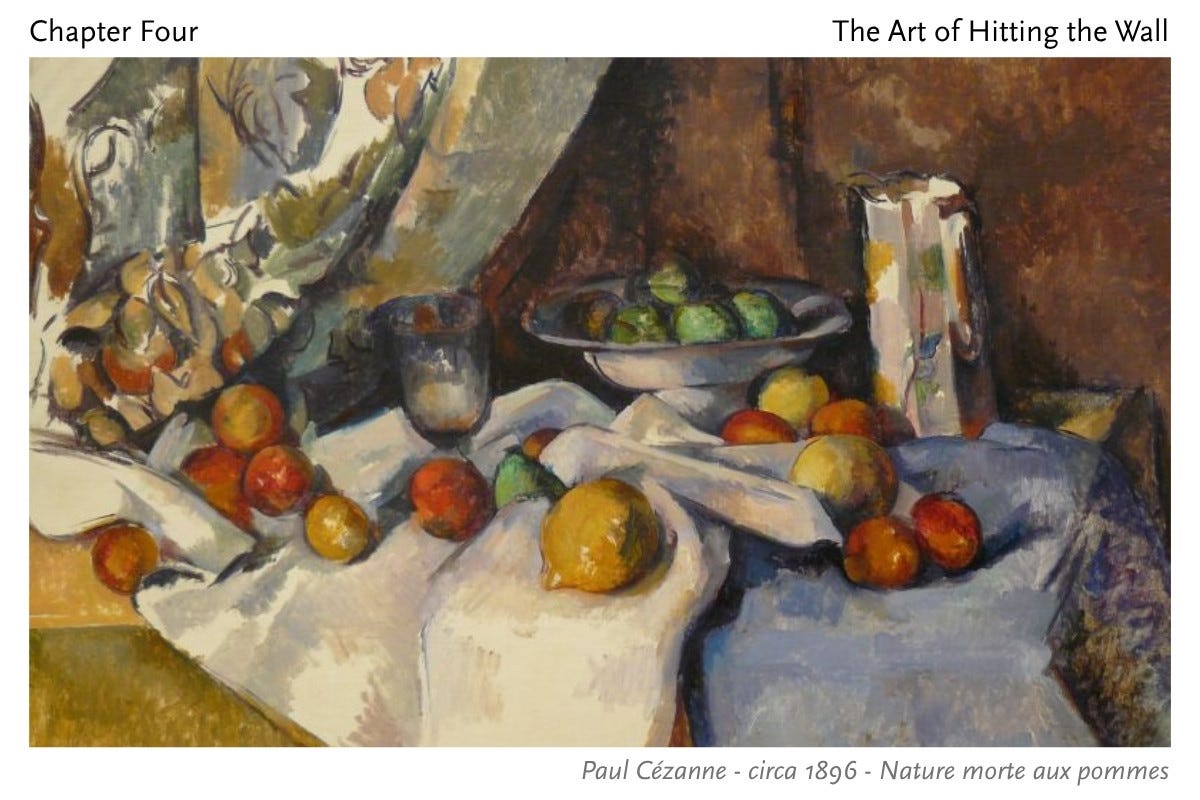Chapter 4: The Laws of Creation [Part I]
I slam the shapeless lump of clay down with a dull thud against the wooden workbench, its surface covered in streaks of paint and sheets of old newspaper. My sleeves are pushed up, palms dark with damp clay, forearms coated with paler dried clay that cracks into fine dust on my skin.
I’ve kneaded it carefully — folding, pressing, folding again. Any air bubbles trapped in the clay could make it crack in the kiln — or worse, explode, sending shards flying. I give it one last firm slap against the tabletop just to be sure.
Dipping an edge of my sponge into a little tub of muddy water, I let it dribble over the clay to make it just a touch softer — working it’s moisture in. Too much and it would squelch into mud in my hands. Too little, and it would crumble in the shaping. There’s clay drying under my fingernails and smudges of pale dust on my school uniform.
I love this class.
It’s funny that out of all our classes, this one — where the desks are arranged in a large U-shape and idle chit-chat is allowed — ends up being the quietest. We speak gently, as if the clay holds a kind of magic that calms and grounds us, somehow. Little pockets of conversation rise now and then, but they quickly fade again, settling back into the dull thuds of clay on wooden tables, the scrape of tools, and the quiet shifting of bodies leaning into their work.
I breathe slowly, deliberately taking in the damp, earthy smell — and beneath it, the familiar, bitter tang of fired bisque that lingers in the air.
Tearing off a lump of clay, I roll it into a rough ball, pressing my thumbs into the centre to create an opening and begin shaping it into a smallish bowl shape. This is the solid base that I’ll build from.
In a plastic tub, I have an assortment of items that would look to anyone else like junk, but they are my potters tools. A muddy sponge, a few scrappy bits of plastic cut from an old margarine tub. A length of fishing wire tied at the ends with corks, a butterknife rusted along one edge, a fork with it’s prongs slightly bent out of shape.
I scratch the rim with the fork, dribble some water to prepare the surface, shape the next piece, lay it on top and blend it in. The vase begins to grow upwards, one layer at a time.
I fall into a rhythm.
We often think of creativity as something wild, like Jackson Pollock recklessly flinging paint across a canvas. But much of the time, it looks a lot like this. The comfortable absorption in a routine, an elbow on the table, the solving of one small problem and then another, pausing to make a cup of tea, before leaning forward again into the soft pull of the flow.
Creativity is not chaos. Its wildness lives inside a shape, like a flame dancing on the wick of a candle.
Without structure, wildness collapses under its own weight,
it cracks in the kiln,
it burns out.
“Too heavy in the thumbs, Tara,” Mrs Collette calls out to me.
Here’s the trouble: When I blend the outside of my clay vase, pressing in with my fingers, I have just the right touch — firm but gentle — and the structure rises, straight and tall. But when I reach in to smooth the inner join with my thumbs, I press too hard. The walls push outward, just slightly. But with each layer, the shape flares a little more.
I’m participating in a slow-motion tug-of-war. I’m trying to make a vase — but it insists on becoming a fruit bowl.
“I’m not very good at this,” I groan.
The same thing happened on my last two projects. This time, I started with a narrower base, but that has only made it worse.
Mrs. Collette’s short hair has a hint of fiery red, her wide face creased with a weathered smile. Her glasses perch too far down her sharp nose, the bridge smudged with faint clay fingerprints. Her love for this craft extends far beyond the walls of this classroom.
“Don’t be frustrated”, she says warmly — “It comes with time.”
With skilled hands, she picks up my fishing wire and shows me how to cut a small V-shape into the side of the vase, removing the excess. Then, gently, she presses the freshly cut sides back together — returning my vase to the shape I’d intended.
“There,” she says “Now blend that in. That’s a trick you can use any time you get stuck,” she says, smiling. “But you’ll have the knack of it in no time.”
And somehow, the way she says it makes me believe her.
Image Credit:
Paul Cézanne - circa 1896 - Nature morte aux pommes



Hi Tara
Your writing is beautiful and I love the idea of viewing the seasons of your life through creative processes and art movements. Stunning!!!❤️
Lun
I cherish the vase that you didn’t think was any good, it’s beautiful and also one that is stunning…. I remember those humble beginnings, which went on to you making beautiful forms, with handles, embossed leaves and engraving with simple glazes that complimented…. Form and flow is everything.
Always loving the details 🥰